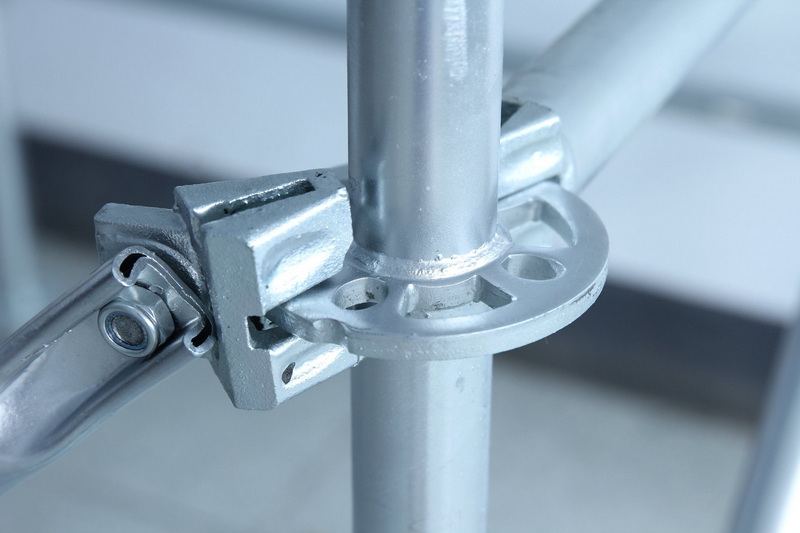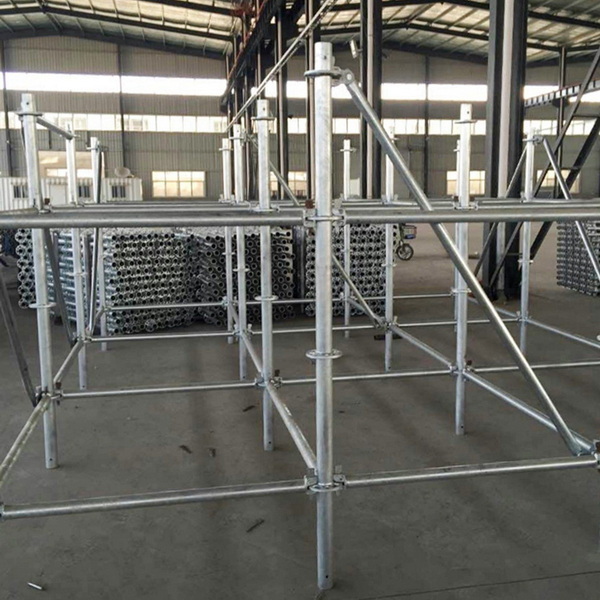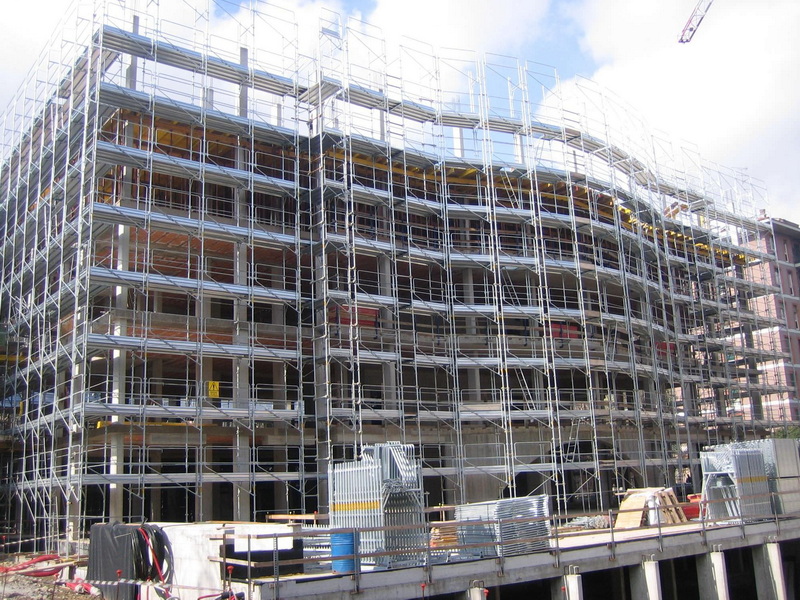Content Menu
● Overview of Scaffolding Types
● Frame Scaffolding: The Traditional Workhorse
>> What is Frame Scaffolding?
>> Advantages
>> Limitations
>> Applications
● Ringlock Scaffolding: The Versatile Industrial Solution
>> What is Ringlock Scaffolding?
>> Key Characteristics
>> Advantages
>> Limitations
>> Applications
● Cuplock Scaffolding: The Robust Middle Ground
>> What is Cuplock Scaffolding?
>> Key Characteristics
>> Advantages
>> Limitations
>> Applications
● Head-to-Head Comparison of Frame, Ringlock, and Cuplock Scaffolding
● Conclusion
● FAQ
>> 1. What are the main advantages of Ringlock scaffolding over Cuplock and Frame?
>> 2. Why is Cuplock scaffolding preferred for straight, large-scale projects?
>> 3. Is Frame scaffolding suitable for industrial projects?
>> 4. How do the costs compare among these scaffolding systems?
>> 5. What safety features differentiate Ringlock scaffolding?
In the construction and industrial sectors, scaffolding forms the backbone of safe and efficient work at height. Choosing the right scaffolding system is crucial to ensure safety, speed, and cost-effectiveness. Among the most widely used scaffolding systems are Frame, Cuplock, and Ringlockscaffolding. Each offers unique benefits and is suited to different project requirements and environments.This comprehensive guide delves into the differences, strengths, weaknesses, and best-use cases for Frame, Ringlock, and Cuplock scaffolding.

Overview of Scaffolding Types
| Scaffolding Type | Description | Key Features | Common Uses |
| Frame scaffolding | Tubular frame sections joined by clamps or integrated connections, quick to assemble | Simple to use, inexpensive, modular | Residential, light commercial projects |
| Ringlock scaffolding | Modular system with rosette nodes allowing multi-angle connections, highly flexible | High load capacity, rapid assembly, rosette locking mechanism | Large infrastructure, industrial, curved or complex structures |
| Cuplock scaffolding | Modular system featuring cup-shaped connectors locking horizontal ledgers to vertical standards | Robust, quick wedge-lock system, fewer connection angles | Medium to large projects, straight structures |
Frame Scaffolding: The Traditional Workhorse
What is Frame Scaffolding?
Frame scaffolding, often known as tubular or frame and brace scaffolding, consists of prefabricated welded steel or aluminum frames connected by cross braces and ledgers. The components assemble with locking pins or clamps, forming a simple but effective support structure.
Advantages
- Ease of Use: Frame scaffolding is straightforward to erect and dismantle, making it popular in residential and small commercial construction.
- Cost-Effective: Relatively low cost due to simple components.
- Lightweight: Often made from aluminum, it is easier to move and handle on site.
- Modular: Standardized frame sizes simplify planning and inventory.
Limitations
- Limited Height and Load Capacity: Frame scaffolding is best suited for low to mid-height applications where heavy load bearing is unnecessary.
- Less Flexible: Primarily straight configurations; poor adaptability for complex shapes or curves.
- Joint Durability: Clamps or pins can loosen under stress, requiring frequent inspections and retightening.
Applications
- Exterior painting and repairs
- Small building construction
- Window installation and cleaning
Ringlock Scaffolding: The Versatile Industrial Solution
What is Ringlock Scaffolding?
Ringlock scaffolding, also called rosette scaffolding, is a modular system featuring vertical standards with welded rosette nodes or discs. These rosettes provide multiple socket points (up to 8 directions) where ledgers, braces, and other components lock in place using wedge-head connectors.
Key Characteristics
- Multi-Directional Connections: Up to 8 attachment points per node allow complex geometries and shaped scaffolding.
- Rapid Assembly: Simple wedge locks enable quick locking/unlocking with just a hammer—no nuts or bolts needed.
- High Load Bearing: Manufactured usually from Q355 steel, supports heavy loads (up to 4 tons per standard).
- Hot-Dip Galvanized: Corrosion resistant for challenging industrial or outdoor environments.
- Versatile Accessories: Stair towers, platforms, cantilever brackets, guardrails.
Advantages
- Exceptional Flexibility: Easily adapts to curved facades, slopes, and irregular shapes.
- Speed: Assembly/disassembly can be up to 5 times faster than traditional systems.
- Long-Term Durability: Minimal maintenance with galvanized surfaces.
- Enhanced Safety: Integrated harness points at rosette nodes plus guardrails can be installed early.
- Traceability & Quality Assurance: Often accompanied by Mill Test Certificates (MTCs) guaranteeing steel grade and performance.
Limitations
- Cost: Higher upfront investment compared to Frame scaffolding.
- Training Required: Assembly technique slightly more complex, necessitating skilled or trained crews.
Applications
- Industrial plants (refineries, power stations)
- Large infrastructure projects (bridges, tunnels)
- Commercial high-rises with complex shapes
- Shipyards and offshore platforms

Cuplock Scaffolding: The Robust Middle Ground
What is Cuplock Scaffolding?
Cuplock scaffolding is a modular system based on vertical standards welded with cup-shaped nodes at regular intervals. Horizontal ledgers connect by wedging into these cup connectors, locking the scaffold in place.
Key Characteristics
- Wedge Locking: Uses simple wedge-head pins to lock horizontal tubes into cups on verticals.
- Fixed Angles: Provides 4-way connections typically at 90 degrees for straightforward scaffolds.
- Strong and Stable: Robust system with high load capacity, able to withstand adverse conditions.
- Easy Maintenance: Hot-dip galvanized for corrosion resistance and durability.
Advantages
- Quick Assembly: Fewer components and standard connection points enable efficient setup.
- Durability: Sturdy construction supports heavy loads and prolonged re-use.
- Cost-Effective: Usually cheaper than Ringlock scaffolding but more expensive than Frame.
- Proven System: Time-tested design with widespread use worldwide.
- Low Maintenance: Galvanized surfaces minimize upkeep.
Limitations
- Less Flexible than Ringlock: Limited to predefined angles; not ideal for curved or highly irregular designs.
- Heavier Components: Slightly heavier than Frame scaffolding, requiring more labor effort.
- Component Loss Risk: Loose wedges or pins can be misplaced, causing delays.
Applications
- Medium to large construction sites with mostly straight vertical/horizontal scaffolding requirements.
- Infrastructure projects needing scalable and reliable scaffolding.
- Commercial buildings with standard geometries.
Head-to-Head Comparison of Frame, Ringlock, and Cuplock Scaffolding
| Feature | Frame Scaffolding | Ringlock Scaffolding | Cuplock Scaffolding |
| Assembly Speed | Moderate (pins/clamps) | Fast (wedge-head locking, rosette nodes) | Fast (wedge-lock system, fewer components) |
| Load-Bearing Capacity | Light to moderate | High (up to 4 tons per vertical standard) | High |
| Flexibility in Design | Limited (mostly straight runs) | Very high (multi-angle up to 8 directions) | Moderate (limited to 4 directions at nodes) |
| Cost | Lowest | Highest | Moderate |
| Suitable Project Scale | Small to medium | Medium to large, complex projects | Medium to large projects |
| Ease of Transportation | High (lightweight frames) | Moderate (flat components stackable) | Moderate |
| Maintenance Needs | Moderate (pins may loosen) | Low (galvanized, minimal wear) | Low |
| Safety Features | Basic, depends on add-ons | Advanced (harness points, quick guardrails) | Moderate |
| Common Applications | Residential, small commercial | Industrial, high-rise, complex structures | Commercial, infrastructure, standard scaffolds |
Conclusion
Each scaffolding system serves unique purposes depending on project scale, complexity, and budget:
- Frame scaffolding remains the economical and practical choice for small to medium-scale projects emphasizing speed, simplicity, and cost control.
- Ringlock scaffolding stands out for versatility, strength, and adaptability, excelling in large-scale, complex, or industrial environments demanding efficiency and safety.
- Cuplock scaffolding provides a balance between frame and ringlock, proven in commercial and infrastructure projects requiring robust, fast-to-assemble systems with moderate flexibility.
Understanding these distinctions and project-specific needs guarantees scaffolding professionals select the most efficient system, minimizing risks and delays while maximizing productivity.

FAQ
1. What are the main advantages of Ringlock scaffolding over Cuplock and Frame?
Ringlock scaffolding offers greater flexibility with multi-angle rosette connections, faster assembly via wedge locks without bolts, higher load capacity, and adaptability to curved and complex geometries unmatched by Frame or Cuplock systems.
2. Why is Cuplock scaffolding preferred for straight, large-scale projects?
Cuplock's 4-way fixed locking cup system provides excellent stability while being cost-effective for large projects where scaffold layouts remain mostly rectilinear, making assembly straightforward and durable.
3. Is Frame scaffolding suitable for industrial projects?
Frame scaffolding generally suits smaller, lighter tasks due to its load and height limitations. Industrial projects usually demand stronger, more flexible systems like Ringlock scaffolding.
4. How do the costs compare among these scaffolding systems?
Frame scaffolding is typically the least expensive upfront. Cuplock presents moderate costs with robust features. Ringlock scaffolding is higher priced but offers long-term cost savings via efficiency, adaptability, and reduced labor time.
5. What safety features differentiate Ringlock scaffolding?
Ringlock scaffolding integrates fixed harness attachment points at rosette nodes and allows early installation of guardrails, ensuring safer access during assembly and use, exceeding safety provisions in Frame and Cuplock scaffolding.






















